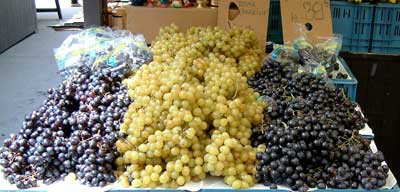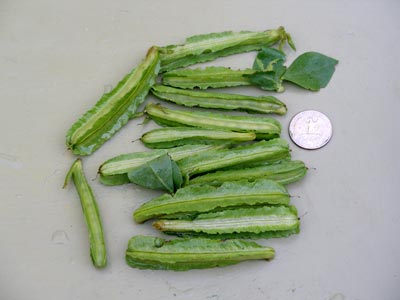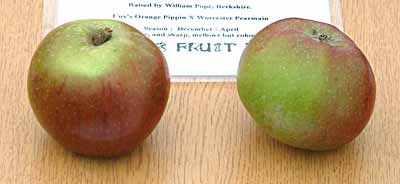The most common barrels used in wine-making are the Bordeaux, at 59 gallons (225 litres), known as the barrique, and the Burgundy at 60 gallons (228 liters). Some wine-makers of the Antipodes and the Americas use the large hogshead barrel at 79 gallons (300 litres).

Wine grapes are simply varieties of grape specifically for making wine, though one or two double up as eating or table grapes as well.
A variety of dual-purpose apple, sweet, juicy and slightly tart, it makes a good dessert apple but is also excellent in pies. It has a deep, clean red skin, tinged with yellow, and some russeting around the stalk. Often used for making cider. It arose in New Jersey and is known since 1800, having been grown by Samuel Coles of Moore's Town. It does not get enough sun in England to do well. This late-season variety is harvested from late October and is at is best from December to March.

Asparagus pea. Winged bean. A thin, green, rectangular pod, the fruit of a leguminous plant with a flower similar to a sweet pea, eaten young in the same way as mange-tout. Nothing whatever to do with asparagus bean.
A very heavy variety of yam grown in South East Asia. It is also known as winged yam because of the winged petioles of the leaves.
A seaweed similar to wakame but found in the North Atlantic. It has a mild flavour and is usually dried and then soaked before use in soups.

A greenish-yellow eating apple, with some russeting and light red flushes. It is firm and crisp, having very white flesh, with a pleasing tartness underlying the mild, sweet flavour. It was raised by William Pope at Welford Park in Berkshire in 1920 as a cross between Cox's Orange Pippin and Worcester Pearmain and was originally named Winter King. It was renamed in 1944. The apple received the Royal Horticultural Society Award of Merit in 1935 and the Award of Garden Merit in 1993. This late-season variety is harvested from mid-October in South-East England and is at is best from December to April.

A yellow to green variety of eating apple with a red blush which arose on a farm near Adamsboro in Indiana belonging to David Flory in 1876. It received the Royal Horticultural Society Award of Merit in 1912. It is said in the United States that the flavour is similar to that of banana. In Germany it is used for making juice. This late-season variety is harvested from early October in South-East England and is at is best from November to January.